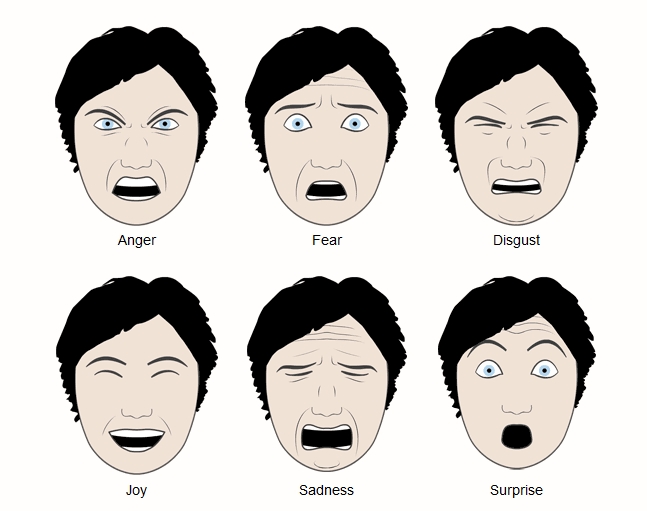Grimace is a term that often finds its way into everyday conversation, yet its nuances can be overlooked. The def of grimace encompasses more than just a simple facial distortion; it conveys a range of emotions and reactions that can tell a story without uttering a single word. Whether it's a reaction to pain, disgust, or even humor, a grimace can communicate feelings that words sometimes cannot. Exploring the depths of this expression allows us to better understand human emotions and interactions.
In this article, we will delve into the meaning behind the def of grimace, exploring its various interpretations and the psychological implications it carries. By examining the origins and uses of the term, we can gain insights into how we, as individuals, express ourselves and relate to the feelings of others. From literature to psychology, the grimace is a fascinating subject that opens up avenues for discussion about non-verbal communication.
As we embark on this exploration, we will also consider the contexts in which grimacing occurs. Is it merely a reaction to discomfort, or does it reflect deeper emotions? By the end of this article, we hope to provide a comprehensive understanding of the def of grimace, offering readers a fresh perspective on this often-overlooked expression.
What is the Def of Grimace?
The def of grimace is defined as a twisting or contorted facial expression often indicating pain, disgust, or disapproval. It can manifest as a slight frown, a wrinkling of the nose, or a complete contortion of the face, depending on the intensity of the emotion being expressed. The term originates from the Old French word "grimacer," which means to make a face or to grimace. This expression serves as a non-verbal cue that can help convey feelings in social interactions.
How Does a Grimace Differ from Other Facial Expressions?
While a grimace is a specific type of facial expression, it is important to differentiate it from other common expressions like a smile or a frown. Here are a few comparisons:
- Grimace vs. Smile: A smile generally conveys happiness or friendliness, while a grimace typically indicates discomfort or negative emotions.
- Grimace vs. Frown: A frown can express sadness or disapproval, whereas a grimace often suggests a more intense reaction, such as pain or disgust.
- Grimace vs. Neutral Expression: A neutral expression shows no strong feelings, while a grimace clearly communicates a specific emotional response.
What Emotions Can a Grimace Indicate?
The def of grimace can encompass a variety of emotions beyond just pain or disgust. Some common emotions associated with a grimace include:
- Pain: A grimace is often a reflexive response to physical discomfort.
- Disgust: People frequently grimace when they encounter something unpleasant or revolting.
- Frustration: A grimace can reflect feelings of irritation or exasperation in certain situations.
- Humor: In a lighter context, a grimace can be used humorously to exaggerate reactions for comedic effect.
Can a Grimace Have Cultural Significance?
Yes, the def of grimace can vary across different cultures. For instance, in some cultures, grimacing may be more commonly associated with expressing distress, while in others, it might serve as a playful gesture. Understanding the cultural context is essential when interpreting a grimace, as the same expression can have different meanings depending on the setting and the people involved.
What Role Does a Grimace Play in Communication?
Grimaces are an important part of non-verbal communication. They can serve various functions, such as:
- Providing Feedback: A grimace can signal to others how one is feeling, allowing for empathy and understanding in social interactions.
- Enhancing Storytelling: In storytelling or acting, a grimace can add emotional depth and help convey the intensity of a situation.
- Facilitating Connection: Shared grimaces in response to humor or discomfort can create bonds between people, fostering a sense of camaraderie.
How is a Grimace Used in Art and Literature?
In art and literature, a grimace can serve as a powerful tool for character development and emotional expression. Authors and artists often use grimacing characters to evoke strong feelings in the audience, emphasizing themes of struggle, conflict, or humor. For example:
- Literature: Characters in novels may grimace during moments of tension or conflict, providing readers with a deeper understanding of their internal struggles.
- Visual Arts: Artists may depict grimacing figures to convey emotional turmoil or to challenge viewers to confront uncomfortable themes.
What Are Some Famous Examples of Grimacing in Popular Culture?
Throughout popular culture, grimacing has become a recognizable element in various forms of media, including film, television, and animation. Some famous examples include:
- Cartoons: Animated characters often exaggerate grimaces for comedic effect, making them instantly recognizable and relatable.
- Movies: Actors use grimaces to portray intense emotions, making scenes more impactful and engaging.
- Memes: The use of grimacing faces in internet memes highlights the humorous side of expressing discomfort or disbelief.
Can Grimacing Be a Form of Non-Verbal Communication in Relationships?
In relationships, grimacing can serve as a powerful form of non-verbal communication. Partners may grimace in response to each other's actions or words, conveying feelings that may not be expressed verbally. This form of communication can strengthen bonds and enhance understanding between individuals. However, it's essential to interpret these signals correctly, as misreading a grimace can lead to misunderstandings.
Conclusion: The Def of Grimace and Its Importance
In conclusion, the def of grimace encompasses a range of emotions and serves as a crucial form of non-verbal communication. Understanding the nuances of this expression allows us to better navigate our interactions with others, fostering empathy and connection. Whether it signifies pain, humor, or frustration, a grimace is a powerful tool in our emotional vocabulary. By recognizing and interpreting grimaces, we can deepen our understanding of ourselves and the world around us.




